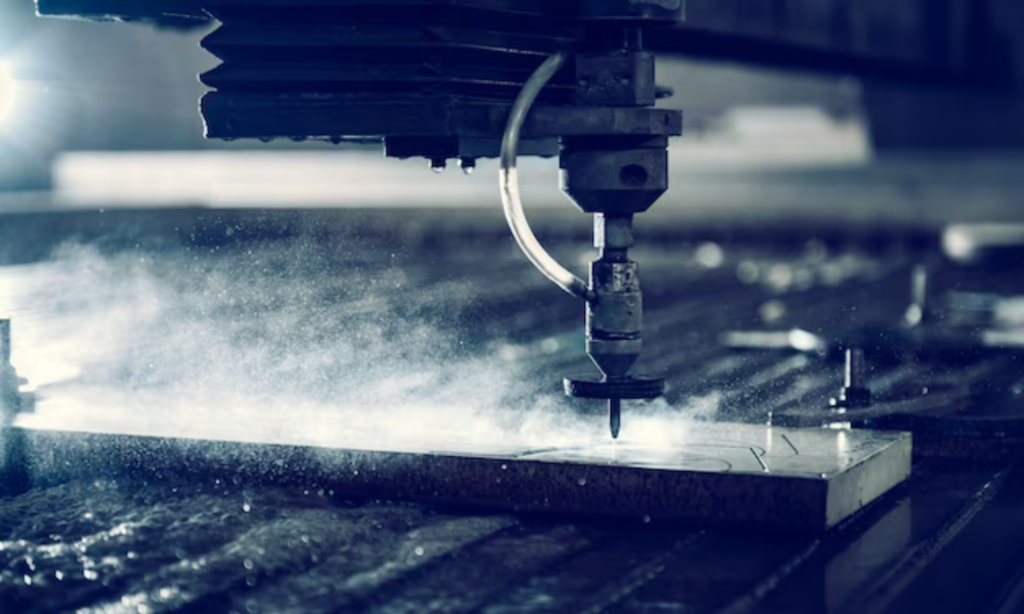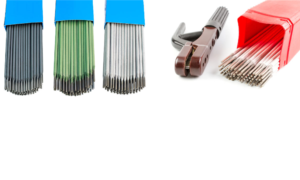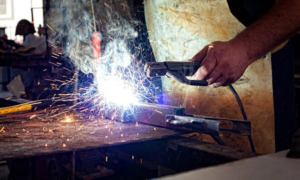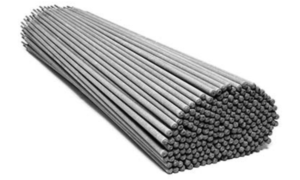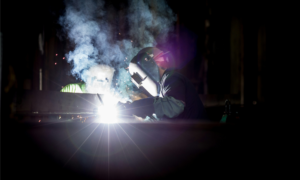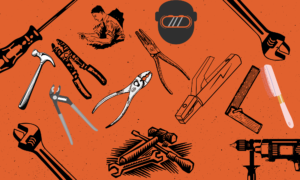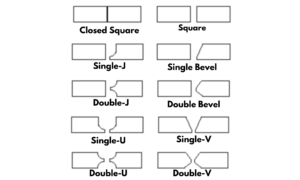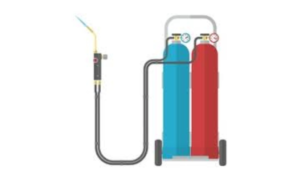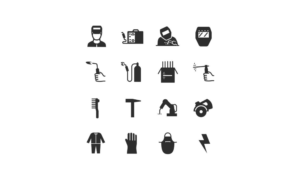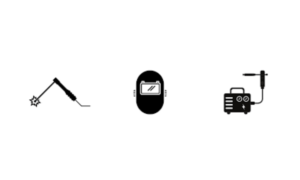How does a water jet cutter work? A water jet cutter works by using a high-pressure jet of water, often mixed with abrasive particles, to cut through various materials. This technology relies on the erosive power of water accelerated to high speeds.
Water jet cutting is a versatile and precise method for slicing through an array of materials, from metals to ceramics, without generating heat or harmful byproducts. This technique offers several advantages, such as minimal material waste and the ability to cut intricate designs.
Due to its cold-cutting nature, it doesn’t alter the properties of the material being cut, making it suitable for a wide range of industrial applications. As businesses search for efficient cutting solutions, water jet technology continues to be a popular choice, given its environmentally friendly approach and adaptability to different materials. With its growing prevalence in manufacturing, water jet cutters are becoming an essential tool for companies aiming to enhance their production while maintaining quality and precision.
The Basics Of Water Jet Cutting
High-pressure Water Generation
Water jet cutters start with an intense stream of water. A high-pressure pump boosts water pressure to an amazing level. Often, this pressure reaches 50,000 PSI or more. Here’s what happens inside:- Water reservoir – stores the water.
- Pump – pushes water to high pressure.
- Intensifier – amplifies the pressure.
- Nozzle – focuses the water into a beam.
Abrasive Materials And Their Role
For tough materials, just water won’t slice it. That’s where abrasives enter the game. Garnet sand is the usual go-to. Mixed with water, it forms a gritty slurry. Here’s what the mix does:| Abrasive | Function |
|---|---|
| Garnet sand | Enhances cutting power for tougher materials. |
| Water | Carries the abrasive to the cut zone. |
Components Of A Water Jet Cutter
Cutting Head: Precision And Design
The cutting head is the heart of a water jet cutter. It directs a high-velocity stream of water and abrasive onto the material. Here’s what it includes:- Nozzle: Focuses the water stream.
- Abrasive Feed System: Mixes water with cutting agents.
- Swivel Joint: Allows for angled cuts.
Pump And Pressure System
The pump and pressure system are the muscle. This system boosts water pressure to an incredible intensity. Key components are:- High-Pressure Pump: Elevates water to the required psi.
- Intensifier: Amplifies the pressure further.
- Tubing: Delivers high-pressure water to the nozzle.
Control Software
Control software serves as the brains. It ensures precise movements and cuts. Operators input design specs, and the software translates them into cutting paths. Features include:- User Interface: For entering data and monitoring operations.
- Motion Control System: Guides the cutter along the correct path.
Materials Handling And Support Systems
Finally, the materials handling and support systems keep everything stable. They include:- Cutting Table: Supports the material being cut.
- Water Tank: Collects and recycles used water.
- Slats: Hold the workpiece in place during cutting.
The Cutting Process Step By Step
Preparing The Material For Cutting
First, choose the right material. Place it on the water jet cutting table. Make sure it’s flat and secure. Safety first!
Programing The Cut Path
Now, it’s time for the digital blueprint. Design the shape on a computer. The software tells the cutter what to do. Simple!
The Jet Stream In Action
The jet stream is like a superhero. Super-fast water with sand inside cuts through anything. Water focuses like a laser, doing the hard work.
Finalizing The Cut: Aftermath And Cleanup
Last step: look at your piece. Time to clean it up. Wash away the grit. Dry it off. Your masterpiece is ready!
- Inspect the material
- Remove excess water and materials
- Recycle the water, if you can
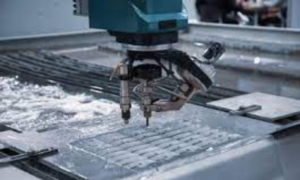
Advantages Of Water Jet Cutting Technology
Versatility Across Materials
Water jet cutters are masters of versatility, working with an extensive array of materials. Unlike other cutting technologies, water jets can slice through metals, plastics, glass, and even composites without flinching. This versatility eliminates the need for multiple cutting machines, making water jet technology a one-stop solution for diverse cutting requirements.- Metals: Steel, Aluminum, Brass
- Plastics: Acrylics, Laminates
- Other Materials: Glass, Stone, Ceramics
Precision And Smooth Edges
Expect nothing less than pinpoint accuracy and sleek finishes with water jet cutting. The fine water stream, often combined with abrasive particles, carves materials with minimal kerf, leaving behind edges so smooth that additional finishing is often unnecessary. Precision cutting also ensures that intricate patterns and detailed shapes are executed flawlessly.Reduced Heat Impact
One of water jet cutting’s hallmark features is its cold cutting method. It produces virtually no heat, safeguarding materials from thermal stress and warping. This aspect is particularly crucial when working with materials that are susceptible to high temperatures, as it maintains the integrity of the material throughout the cutting process.Eco-friendly And Recyclable
Water jet cutting stands out for its minimal environmental footprint. It uses water and garnet, a natural abrasive, both of which are recyclable. The process doesn’t generate hazardous waste, aligning with eco-friendly practices and helping manufacturers maintain sustainable operations. It’s a win-win for both industry and the environment.| Feature | Benefit |
|---|---|
| Material Preservation | Cuts without heat, protecting material properties |
| Waste Reduction | Limited scrap and recyclable materials used |
Applications And Industries
Aerospace And Automotive
The aerospace and automotive industries prize high precision. A water jet cutter can slice through aluminum, titanium, and carbon fiber without heat. This prevents material distortions. Water jet cutters ensure the parts fit perfectly every time.- Fuel Systems
- Interior Components
- Engine Parts
- Custom Fabrications
Art And Architecture
Artists and architects leverage water jet cutters for creative freedom. Complex patterns and shapes are cut with ease. Materials range from stone to metal. Even large, delicate glass panels are cut cleanly for stunning buildings and sculptures.| Material | Use |
|---|---|
| Stone | Public Art Pieces |
| Metal | Structural Elements |
Manufacturing And Fabrication
In manufacturing and fabrication, water jet cutters are indispensable. They handle metals, plastics, and composites with no heat-affected zone. This maximizes material integrity and allows for immediate processing.- Prepare Material
- Cut to Specification
- Immediate Assembly
- Quality Inspection
Future Of Water Jet Cutting
Technological Advancements
New breakthroughs in water jet technology are enhancing precision and speed. Ultra-high-pressure systems now achieve more intricate cuts. Pulse water jet technology offers controlled cutting for delicate materials. These advancements ensure water jet cutting remains at industry’s cutting edge.Broader Material Applications
Water jets are expanding their repertoire. Originally reserved for softer materials, newly engineered jets can slice through virtually anything. Innovations allow for cutting thicker metals, composites, and even hybrid materials. This versatility opens doors across various sectors, from aerospace to custom automotive.Integration With Robotics And Ai
Robotic arms equipped with water jets are revolutionizing production lines, offering unprecedented precision. Artificial Intelligence (AI) further propels this innovation. AI-driven systems analyze materials and adjust cutting parameters in real-time for optimal results. The synergetic relationship between robotics, AI, and water jet tech heralds a smart and efficient future.Frequently Asked Questions Of How Does A Water Jet Cutter Work?
How Does A Water Jet Cutting Machine Work?
A water jet cutting machine utilizes high-pressure water, often mixed with abrasive particles, to precisely cut a variety of materials. The jet stream erodes the material, resulting in a clean, sharp edge.
Can A Water Jet Cut Anything?
A water jet can’t cut everything; its effectiveness varies with the material’s density and thickness. Hard materials like diamond or tempered glass typically resist water jet cutting.
How do water jets cut metal?
Water jets cut metal using a high-pressure stream of water mixed with abrasive particles, focusing the jet on the material to erode it away precisely.
What Are The Disadvantages Of Water Jet Cutting?
Water jet cutting can struggle with thick materials, sometimes leading to slower processing speeds and lower precision. Additionally, high operating costs and the inability to cut certain materials, such as tempered glass, present limitations. The requirement for constant water supply also poses an inconvenience.
Conclusion
Understanding water jet cutters reveals a fusion of innovation and functionality. These tools harness water’s natural force with advanced technology to slice through materials precisely. Adopting one for your projects promises efficiency and versatility. For precise, eco-friendly cutting solutions, embrace the power of water jet technology.

